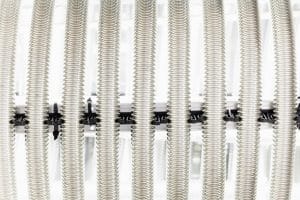 Along with increased processing power and immense data storage capabilities, advanced technology also provides impressive innovation in the realm of thermal management. Properly managing electrical waste heat is essential for any system to operate, and as applications have grown smaller and more powerful, their thermal management needs have grown more complex. To answer that complexity, heat exchangers make use of simple, natural forces to transfer waste heat, including phase-change cooling that allows heat exchangers to bring the benefits of liquid cooling to applications that couldn’t normally accommodate conventional liquid cooling technology.
Along with increased processing power and immense data storage capabilities, advanced technology also provides impressive innovation in the realm of thermal management. Properly managing electrical waste heat is essential for any system to operate, and as applications have grown smaller and more powerful, their thermal management needs have grown more complex. To answer that complexity, heat exchangers make use of simple, natural forces to transfer waste heat, including phase-change cooling that allows heat exchangers to bring the benefits of liquid cooling to applications that couldn’t normally accommodate conventional liquid cooling technology.
How Phase-Change Cooling Works
Phase-change cooling is the process of using a fluid’s latent heat of vaporization to absorb thermal energy without a notable rise in temperature. As the fluid near the heat source absorbs the waste heat, it evaporates. Then, it is transferred to a cooler area of the heat exchanger (such as a heat sink) to release the heat and become liquid again. Phase-change heat exchangers are often heat pipe-based and operate within a closed loop, ensuring the integrity of the fluid as well as the integrity of electrical components housed within the enclosure.
Because phase changes are natural, harnessing the changes to transfer electrical waste heat doesn’t require complex machinery, such as an air conditioner. On the contrary, in addition to simplifying thermal management techniques, heat exchangers are also designed to minimize the amount of energy they use and the level of maintenance they need.
To learn more, call Noren Thermal, Inc. in Taylor, TX, today at 866-936-6736.







